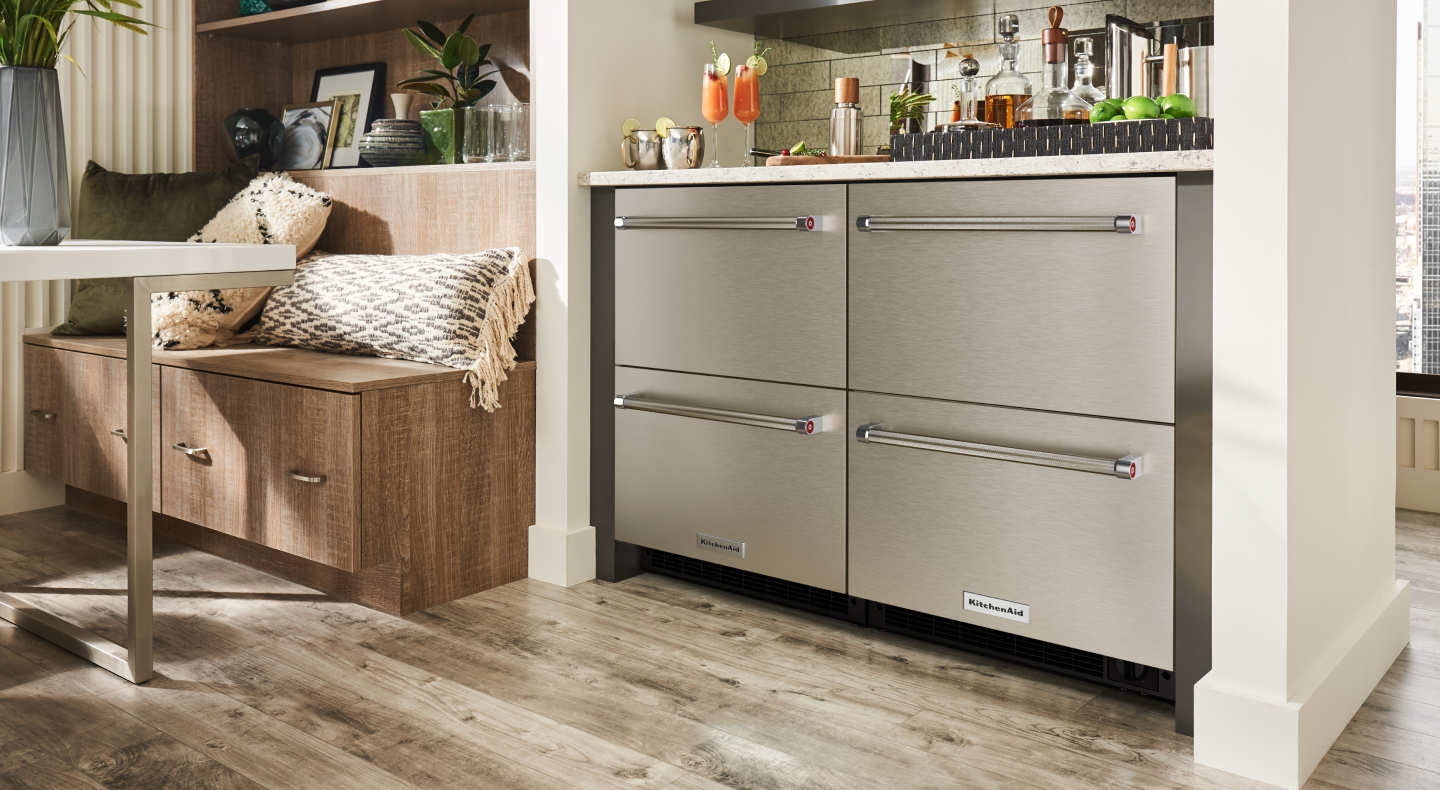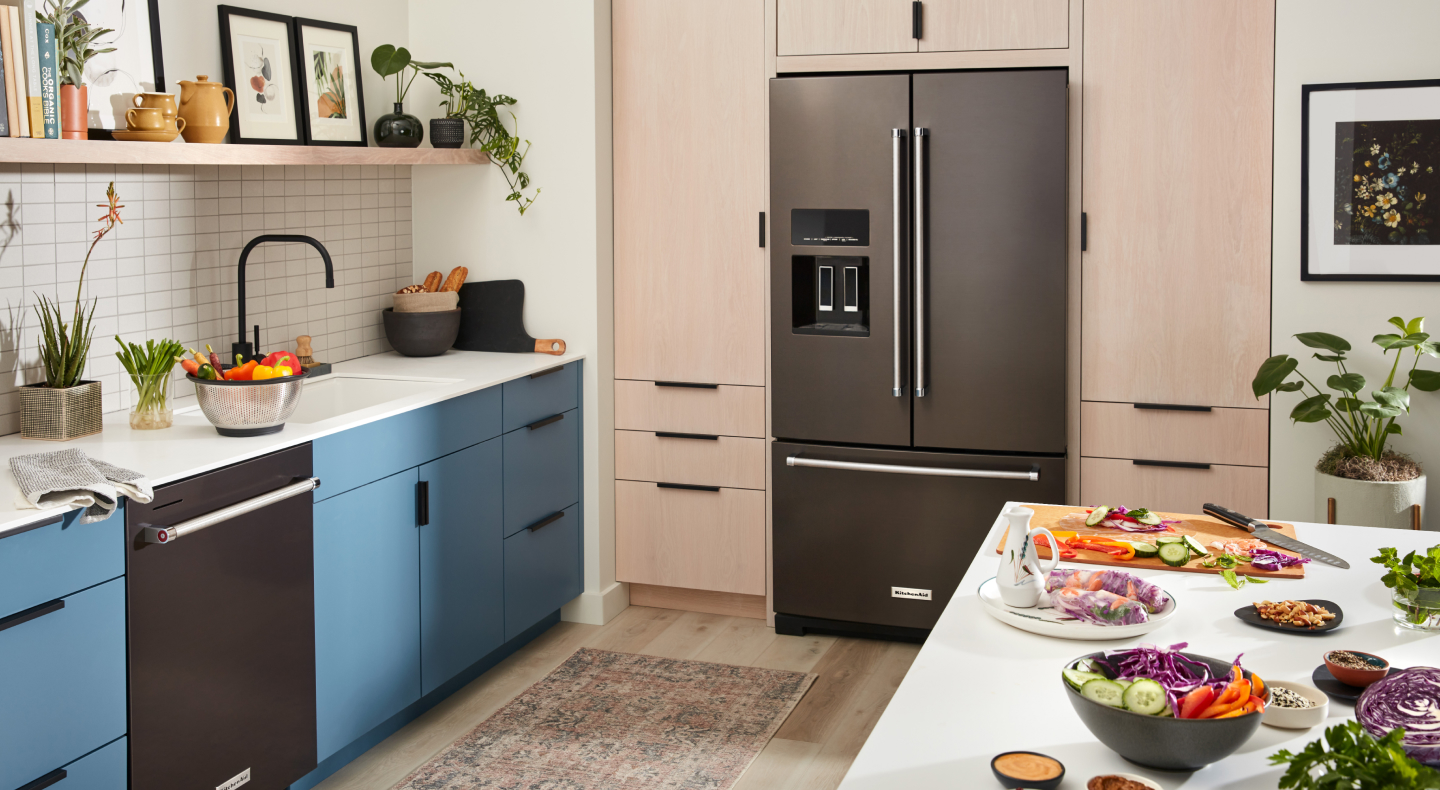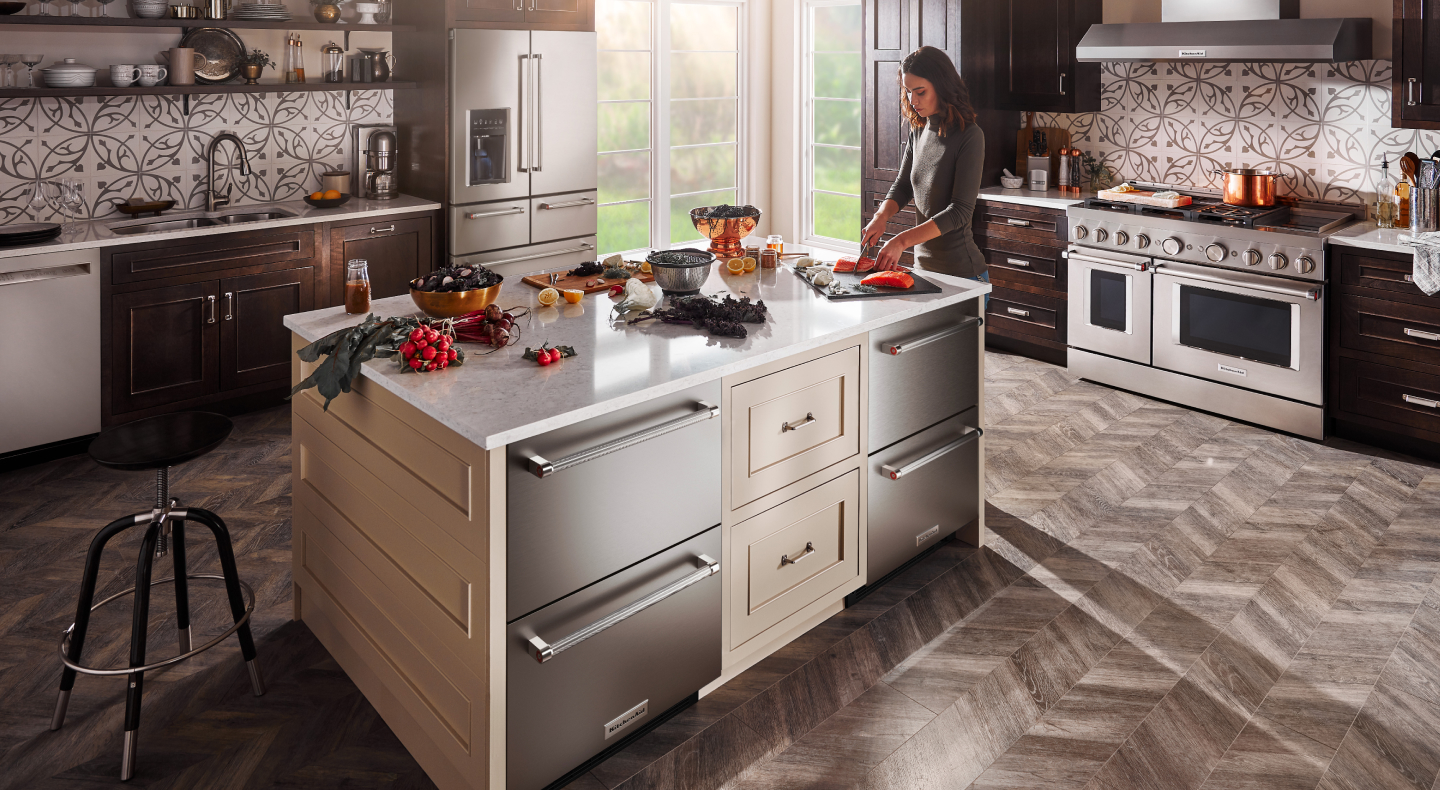
How to defrost a freezer without getting water everywhere
Over time, ice can build up in your freezer compromising the space in your freezer and the quality of your frozen foods. It’s especially important for older models, without auto-defrost features, to defrost your appliance regularly to keep it running smoothly and to help preserve your food. Use this guide to learn how to manually defrost your freezer and discover tips for avoiding a watery mess.
Why is my freezer frosting up?
Frost occurs in your freezer when warm, moist air enters the freezer compartment, leading to ice buildup that can cover air vents and temperature sensors over time. Frost happens most commonly when the door is left ajar or open for too long. Be sure and check your gasket for damage as this can cause warm air to seep in, creating fluctuations in temperature that can result in frost. Placing foods that are not completely cool in your freezer can also create humidity that can lead to frost forming.
Learn more about signs your freezer is too cold and how to ensure it's always at the correct temperature.
Defrosting a freezer: a step-by-step guide
Defrost and clean your freezer when frost has built up to about 1/4" (0.6 cm) thickness, and thoroughly defrost and clean your freezer at least once a year. In high-humidity areas, a freezer may need more frequent defrosting and cleaning. Consult your owner’s manual on how best to defrost your model. To help keep everything running at peak performance, be sure and clean your fridge and your ice maker regularly as well.
Supplies
Rags, plastic liner or old beach towels
Baking soda or vinegar
Cleaning cloth
Sponge
Coolers (optional)
Newspaper, blankets
Bowls or buckets
Hot water
Tools
Plastic scraper
Phillips-head screwdriver (for removing a base grille)
Fan (optional)
Wet vac (optional)

Step 1: Unplug & unload
Turn off the cooling and unplug the freezer. Remove all frozen food and wrap in several layers of newspaper and cover in a blanket and store in coolers or a second freezer.

Step 2: Prepare for the big thaw
If your freezer has a drain cap, this must be removed before defrosting. Attach the drain hose and place it in a bucket to catch the water. If your freezer doesn’t have a drain hose, place beach towels or a plastic liner at the base of the freezer to help catch any water.

Step 3: Warm it up
Place a bucket, bowl or pan of hot water in the freezer, with the door open, to help speed melting. Use a fan (outside the freezer) to help direct the air.

Step 4: Scrape, clean & dry
Use a plastic scraper or wooden spoon1 to scrape away the frost. Use a soft cloth or sponge to wipe water from the walls. Then wash the walls with a solution of 2 tbsp of baking soda and 1 quart of warm water. Do not use abrasive or harsh cleaners. When the freezer is clean, wipe the interior dry with a clean, soft cloth. Use a wet vac to help mop up any extra water on the floor.
1. Do not use an ice pick, knife or other sharp-pointed tool to defrost the freezer. Damage can occur.

Step 5: Reconnect & reload
Plug in your freezer (remove drain hose and replace drain cap if applicable), set temperature to desired setting and reload frozen food. For optimal organization, store like-items together and label items clearly with expiration dates.
Can you defrost a freezer without turning it off?
If you have hard ice visible in your freezer compartment you will need to unplug your appliance, allowing it to warm above 32ºF so the ice can melt. Keep items from the appliance cool by wrapping them in newspaper and blankets and storing in coolers.
How do you defrost a chest freezer?
To defrost a chest freezer, remove contents and store them in coolers, as you would when defrosting any other type of freezer. If your chest freezer has baskets or removable shelves, remove them as well. Unplug the unit. If your chest freezer has a drain hose, remove the drain plug then attach the drain hose adapter and the drain hose. Place the end of the drain hose into a bucket—or a drain in the floor—and allow the melting ice to flow into the bucket. To speed up the ice melting process, place a bowl or bucket of warm water in the freezer. Scrape the ice buildup with a plastic scraper tool until all ice is removed.
Once your chest freezer is clean and dried. Remove the drain hose, replace the drain plug, plug your freezer back in and turn it on. Take the opportunity to reorganize frozen foods and weed out old/expired items, as you would for any other type of freezer. It may take 24 hours for the freezer to return to your desired temperature.
How do you defrost an upright freezer?
Some upright freezers may have a base grille. This will need to be removed with a Phillips-head screwdriver before defrosting. Once the grille is removed, pull the drain hose through the area behind the base grille to drain water into a pan placed under the hose; have a second pan handy to catch any additional water. Proceed with the defrosting process using the steps outlined above.
How long does it take to defrost a freezer?
If you defrost your freezer regularly and the buildup isn't too thick, it should take about two hours to defrost a freezer from start to finish. Things like the extent of the ice buildup, the size of the freezer and the temperature of your room can impact the defrosting time.
How do you defrost a freezer quickly?
To defrost your freezer quickly, gather all of your tools and supplies ahead of time. Make sure to consult your owner’s manual for guidance on the best way to defrost a freezer. Choosing a warm day and adding a pot of steaming water to the freezer (with a fan focused on it) can help speed up the melting process. Keep in mind that defrosting requires patience. Gently pry and scrape the ice away from the freezer compartment walls without poking or stabbing to avoid damaging the appliance.
Tips for defrosting a freezer
Plan ahead, use up as many of your frozen items as you can before the designated defrost day
Keep the water in your pot or bowl hot by replenishing it with hot water every 15 minutes
Keep the door open while you’re defrosting to let warm air circulate and help expedite melting
Never use knives or other sharp objects to scrape the ice
Defrosting a freezer is an opportunity to organize frozen food by storing like items together, tossing expired items and placing the oldest items within easy reach
The outside of your freezer can use a little love too—don’t use abrasive or harsh cleansers—a little soapy water and a clean sponge are all you need to give it a good bath
Make sure the freezer is completely dry before you reconnect it to power
Open freezer doors as infrequently as possible to help prevent warm air and moisture from entering the freezer
Check your gasket often to make sure it’s clean and tight
Overloading your freezer can prevent proper air circulation and the cooling of frozen foods
- Use only freezer-safe containers and moisture-proof, vapor-proof freezer wrap to help prevent ice crystal formation on food
Explore KitchenAid® refrigerators
KitchenAid brand offers refrigerators in a variety of styles and sizes to accommodate your kitchen layout and the way you create. Whether you’re looking for a sleek KitchenAid® built-in refrigerator or a versatile KitchenAid® freestanding refrigerator, you’ll find refrigerators equipped with innovations designed to provide premium cooling and storage. Don’t miss advanced cooling features like the ExtendFresh™ Temperature Management System2 to maintain optimal temperatures for fresh and frozen food. This single evaporator system uses sensors to continually monitor temperature levels in both the refrigerator and freezer and adapts the flow of cold air between them. Or the Preserva® Food Care System2 with two independent cooling systems that provide a dedicated refrigeration unit to help keep food fresh longer and a separate system for frozen food.
2. On select models






